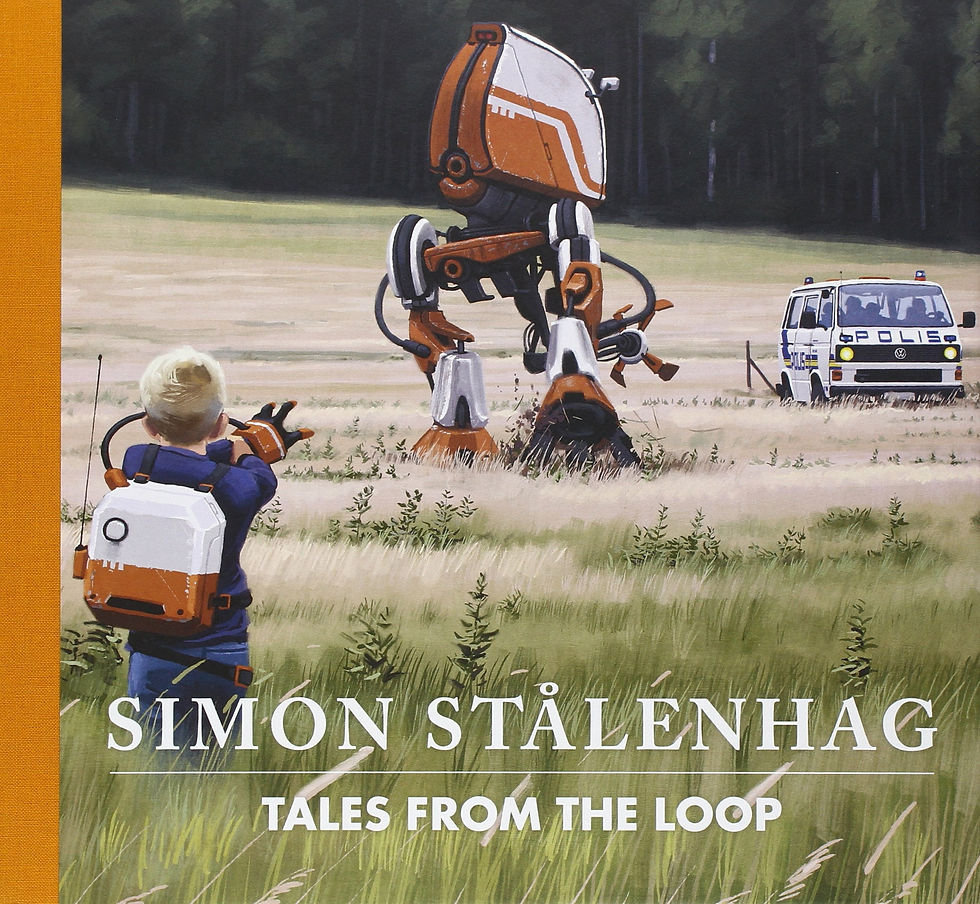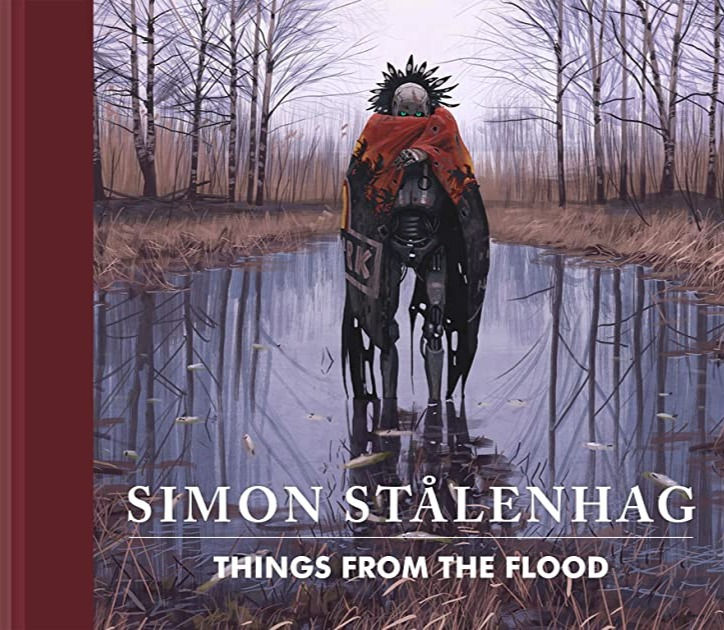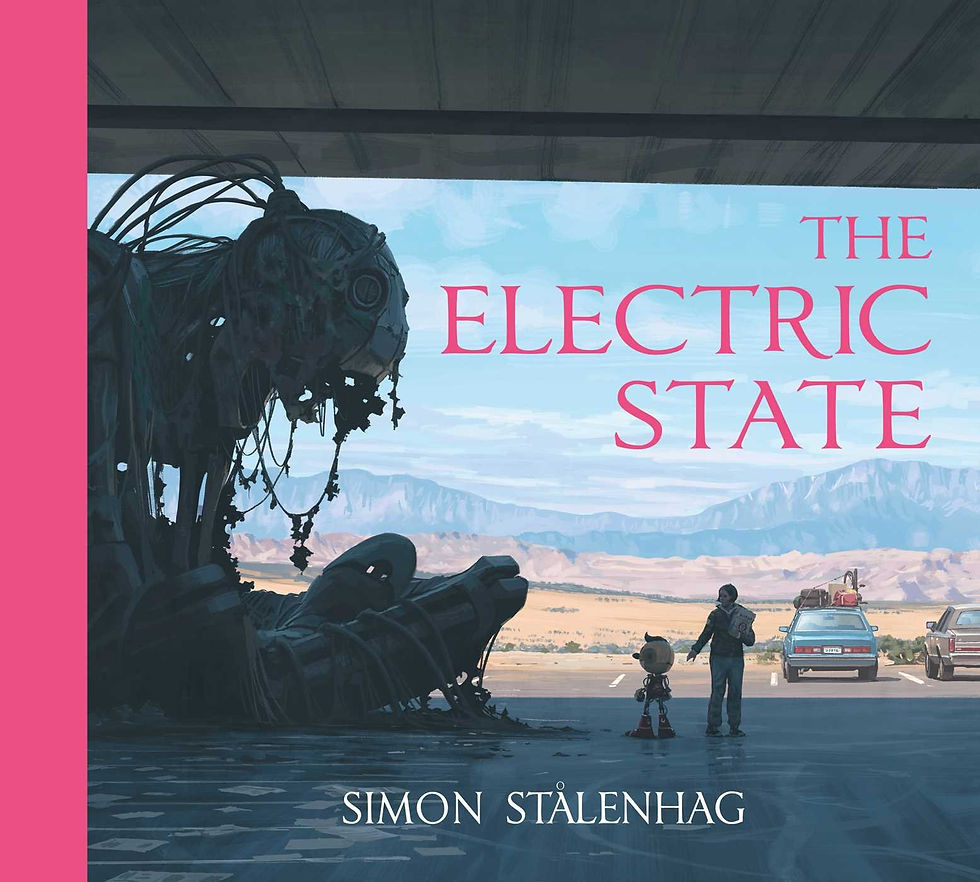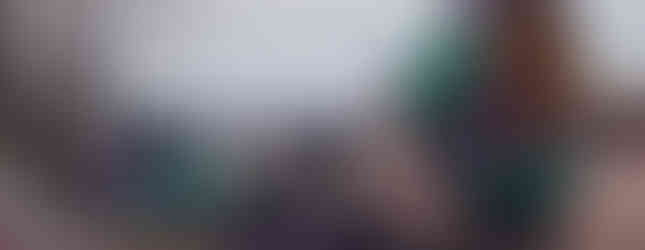Simon Stålenhag - Part 2: The Books That Bind Us
- havenmilne20
- Oct 19, 2021
- 4 min read
Updated: Mar 7, 2022

Through the eyes of a young version of himself, Stålenhag tells us stories about his child hood living and growing up around a series of islands in Sweden, which is home to a number of underground laps and rest each facilities, as well, as a large and power particle accelerator, all operating beneath the feet of the Swedish people and countryside.
Even though his passages/writings aren’t long and the stories don’t go into a large amount of detail, the world in which he shares, even though fictional, still manages to hold onto a high level of reality, which in my opinion, a lot of other science fiction (and regular) artists don’t seem to be able to grasp.
His compositions, simple and well planned, are almost snapshots of real life, pictures taken by an adolescent, of things which capture his attention, more than his amazement and imagination. This is down to the fact that the science fiction elements which are featured in his artwork, are parts of everyday life for the fictional world’s inhabitants.
This, is where Stålenhag's work truly strives.

His first book, Tales From The Loop, was an instant success in 2014, drawing in a much wider audience, since it began to delve into the world/classing of graphic novels, without even being telling a continuous narrative.
His stories were told in a new way, even though fictional, still made people (and myself) feel like I was apart of his world.
Some artwork from the book is shown on Part 1: The World Before, That Never Was.

Two years later, a sequel to his first book was published. It featured new and original tales and writings, as well as new and unused artwork, that wasn't featured in the first book.
The sequel, entitled: Things From The Flood.
A slight change to its predecessor, Things From The Flood, the narratives which the book hosts, as well as the artwork itself, takes on a darker tone, leaning towards the elements of horror, gore, otherworldliness and foreign entities, showing use moments in his world that are beyond being human, in a physical, time, and multi-dimensional level.
Compared to the first book, the sequel shows another side to Stålenhag's world which the first didn't. Tales From The Loop focused on the advancements, the people and the randomness of living within and around The Loop, while now, Things From The Flood show a darker side, the negative aspects, the creatures, monsters and beings that lurk away from prying eyes and normal life, watching and waiting for something.
The success of these two books helped staple Stålenhag's name into the creators for popular and recognisable artwork and style, its strong and clear colours due to the usage of a digital platform which he uses as his canvas, but the digital brush strokes that give the art work and oil painting feel and look, give it a deeper grounded sense of reality, helping to make his world, characters and events more real.
From all that success as well, Stålenhag's work moved over to a new world in 2016, in which, from its early conceptional designs and before the release of the game, his artwork helped to inspire and design the style for HELLO GAMES' (only now) cult hit video game, No Man's Sky.
Stålenhag was simply hired to work on a selection of promotional art for the game, but when the superiors and art team within HELLO GAMES saw the star of his work, they new they had to change and adapt to his style, taking on the striking patterns, shapes and realistic feelings of his ships, planets and creatures. In my own opinion, I don't think I would be able to play No Man's Sky, unless it was the artistic vision of Stålenhag that I would be exploring in.
Following on from the success of his game artwork, Stålenhag began creating his next book, which was published on September 6th, 2018, under the title:

THE ELECTRIC STATE
This third instalment in Stålenhag's alternate world, moves out of Sweden for the first time and across the pond, following a teenage girl named Michell, and her toy robot Skip, as they trek across the western United States, in a stolen car, their genuine and artificial hearts set on their mission: finding Michelle's missing brother.
In this new book, Stålenhag moves away slightly from his guidebook-photo-album-scrapbook style, and towards the graphic novel style in which his fans originally thought he was creating. The book still holds onto the styles of his previous two publishings, but instead of series of random stories and tales that are only connected to one another by the location of which they are set in and the voice they are being told by, The Electric State's protagonist Michelle, gives the book a new movement, flow and delivery (as well as an expansion to Stålenhag's world), telling us about what she sees, where she is going, why she is going, and how the United States that she inhabits, happens be to and works.




















Comments